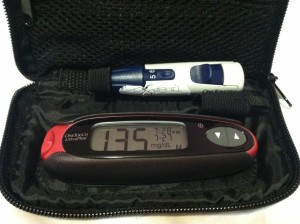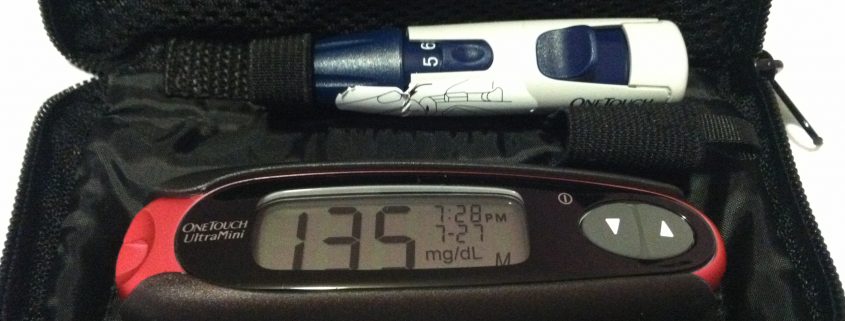American Association Diabetes Alert Day
 Tuesday March 26, 2013 is American Diabetes Association Alert Day! This is a “wake-up” call for all Americans to find out if they are at risk of developing type 2 diabetes. While there are millions of people in the U.S. diagnosed with type 2 diabetes, there are many more that are unaware they may be at risk, or already have pre-diabetes. I encourage you to take “Diabetes Alert Day” seriously and go see your doctor to get tested. Visit the American Diabetes Association’s website for more information.
Tuesday March 26, 2013 is American Diabetes Association Alert Day! This is a “wake-up” call for all Americans to find out if they are at risk of developing type 2 diabetes. While there are millions of people in the U.S. diagnosed with type 2 diabetes, there are many more that are unaware they may be at risk, or already have pre-diabetes. I encourage you to take “Diabetes Alert Day” seriously and go see your doctor to get tested. Visit the American Diabetes Association’s website for more information.
Find out if you are at risk– If you are over the age of 45, overweight, and rarely exercise, you may be at greater risk for developing type 2 diabetes. If you are African America, Latino, Native American or Asian and have a family history of diabetes, then you are also at a higher risk. Take the simple step to ask family members if there is diabetes in the family so that you can become aware and start making positive changes in your lifestyle today.
Exercise, exercise, exercise- Studies have shown that losing 7% of your total body weight can prevent or slow the onset of diabetes. Exercising for 30 minutes a day is a great way to start moving and to lose excess weight! Take a walk with a friend, go to the park with your family or join a gym for motivation. Not only will you look better, but you will feel better and know that your health is improving because of something that you decided to do to change your life!
Eat well-balanced meals- Getting the right amount of food daily is very important for weight loss and blood sugar levels. Eat low-fat protein and dairy products, consume colorful fruits and vegetables each day, increase your whole grain intake and decrease simple sugars, especially in items like soda and candy.
Learn about sugar- There may be hidden sugars in the foods that you eat, so don’t just focus on the percent daily value of sugar on the food label. Read the ingredient list and look out for words such as corn syrup, dextrose, maltose, molasses, fruit juice concentrate, sucrose and xylose, which are all terms for sugar. The American Heart Association recommends no more than 100 calories (approx. 6 teaspoons) from added sugar for most women and no more than 150 calories (approx. 9 teaspoons) from added sugar for most men.
Early detection of any disease is essential in receiving the best treatment and diabetes is no exception. The more you know, the better the chances of living a longer, healthier, happier life. Make a change today, for the betterment of yourself, and your loved ones.
Your turn to take action: What will you do to “alert” yourself to the risk of diabetes?


Bonnie, this was a great blog post! Very very informative and straight to the point. Currently, I am worrying about my husband (he has been diagnosed with pre- diabetes) and I will pass on this blog post to him. Thank you!
Ashley, it is difficult sometimes when our loved ones don’t see the seriousness of pre-diabetes. Please have your husband contact me if he has any questions. Thanks for reaching out.
Bonnie, as a person with heredetary risk of diabetis I am very sensitive to the topic and I am doing everything I can to rewire my genetics by doing EXACTKLY what you suggest. I am so happy I am on the right track. So many people (especially in the US) are not aware of how what they eat (and drink!) puts them at risk. Thanks for providing this information for them!
Excellent Marina! Keep on track for a healthy future!
Pre diabetes can have such a profound effect on us and our loved ones. Unfortunately a person must want to change from inside. Must come from them to have a long term effect.
Agreed. As with anything, they have to want to make the changes. There have been many times when a patient comes to see me with pre-diabetes, because their doctor or spouse wanted them to. They weren’t ready to make changes, often because they has no “symptoms”. Unfortunately, 5 years later they call me back, now with diabetes. I hope people get the message that pre-diabetes is their warning sign…they can still prevent type 2 diabetes by making the necessary lifestyle changes.
Unfortunately many often overlook the pre diabetes warning. We need to find a way to stress it even further that it cannot be overlooked.
I agree! People don’t always take a pre-diabetes diagnosis seriously, and 5 years later they are back in my office with type 2. We need to get the message out louder and clearer that it’s important to address those pre-diabetes numbers and bring them back into normal range.